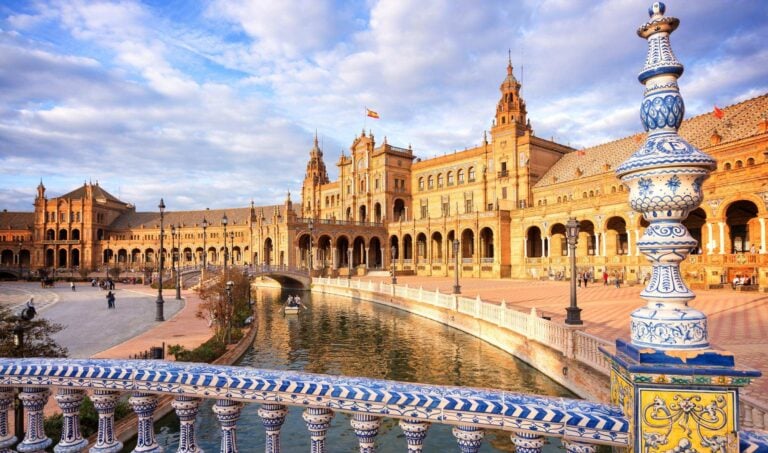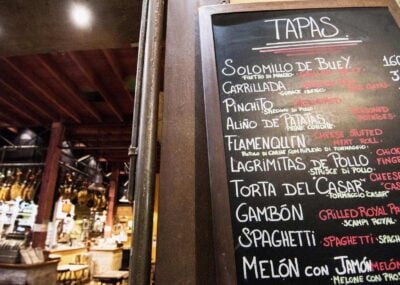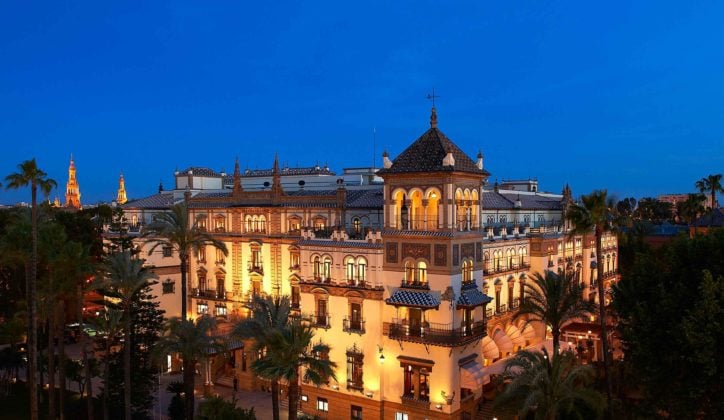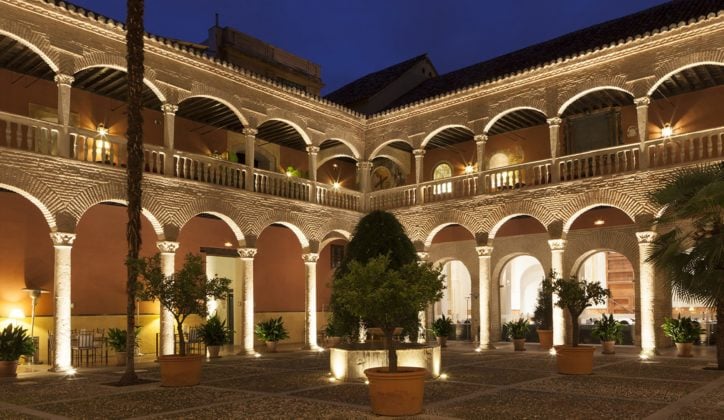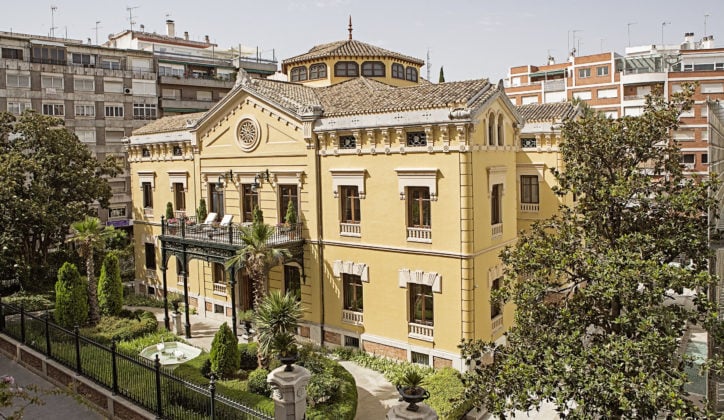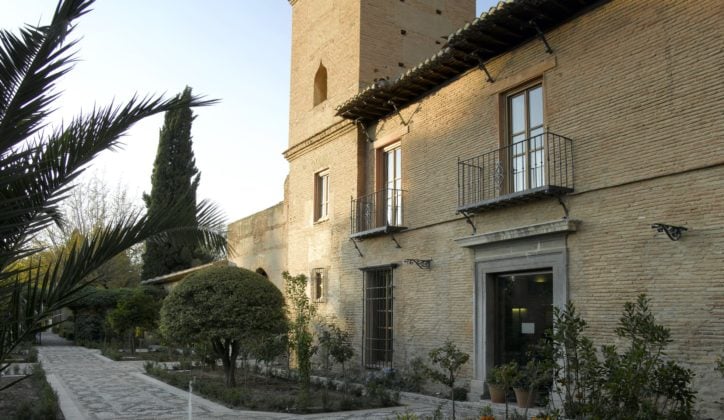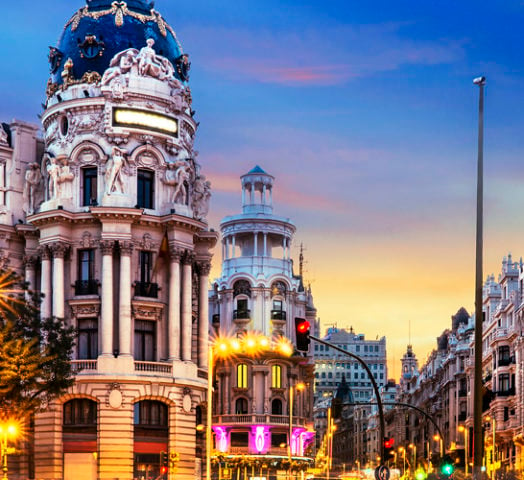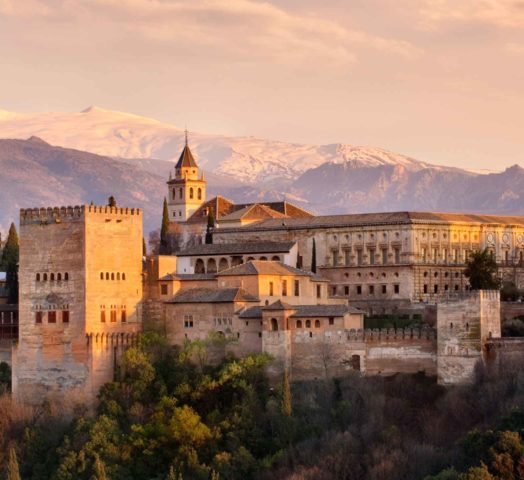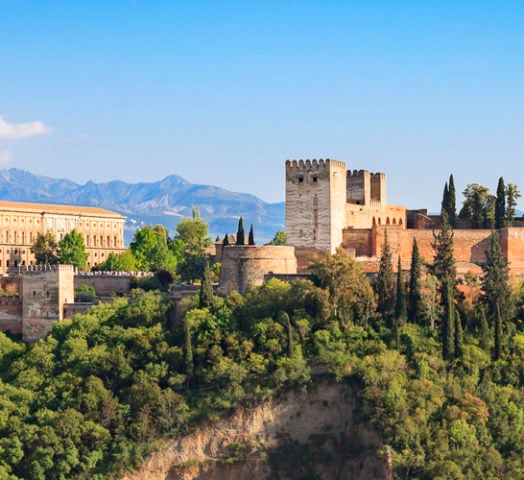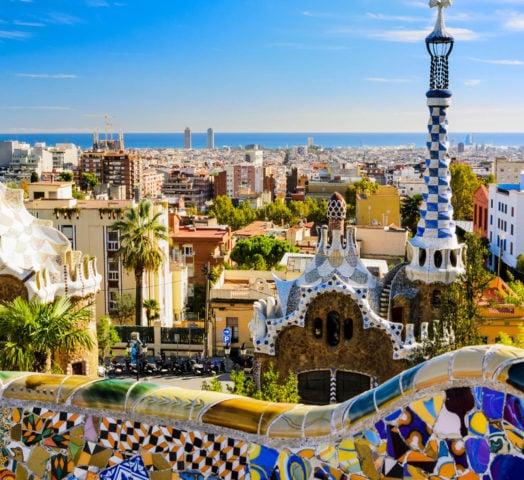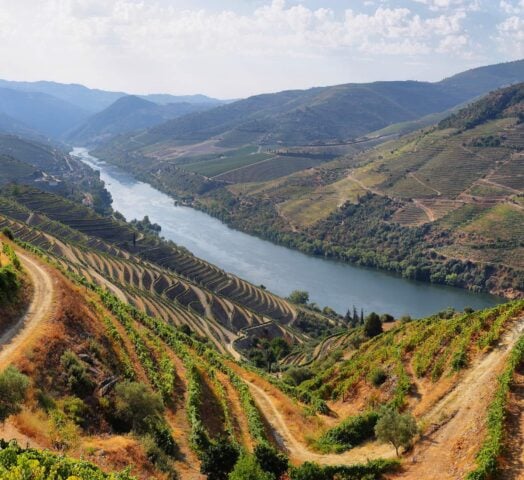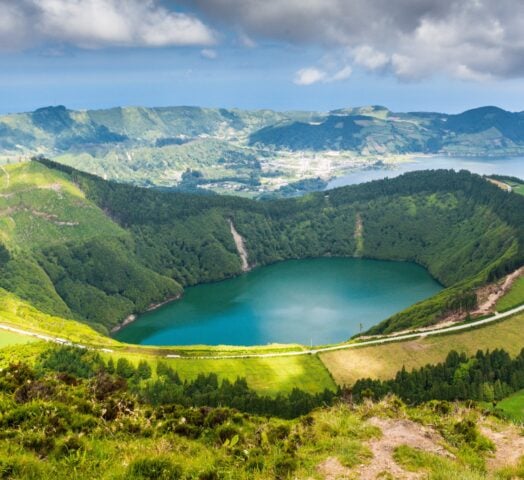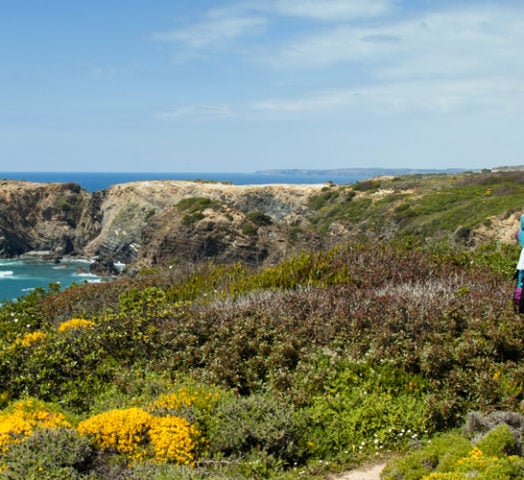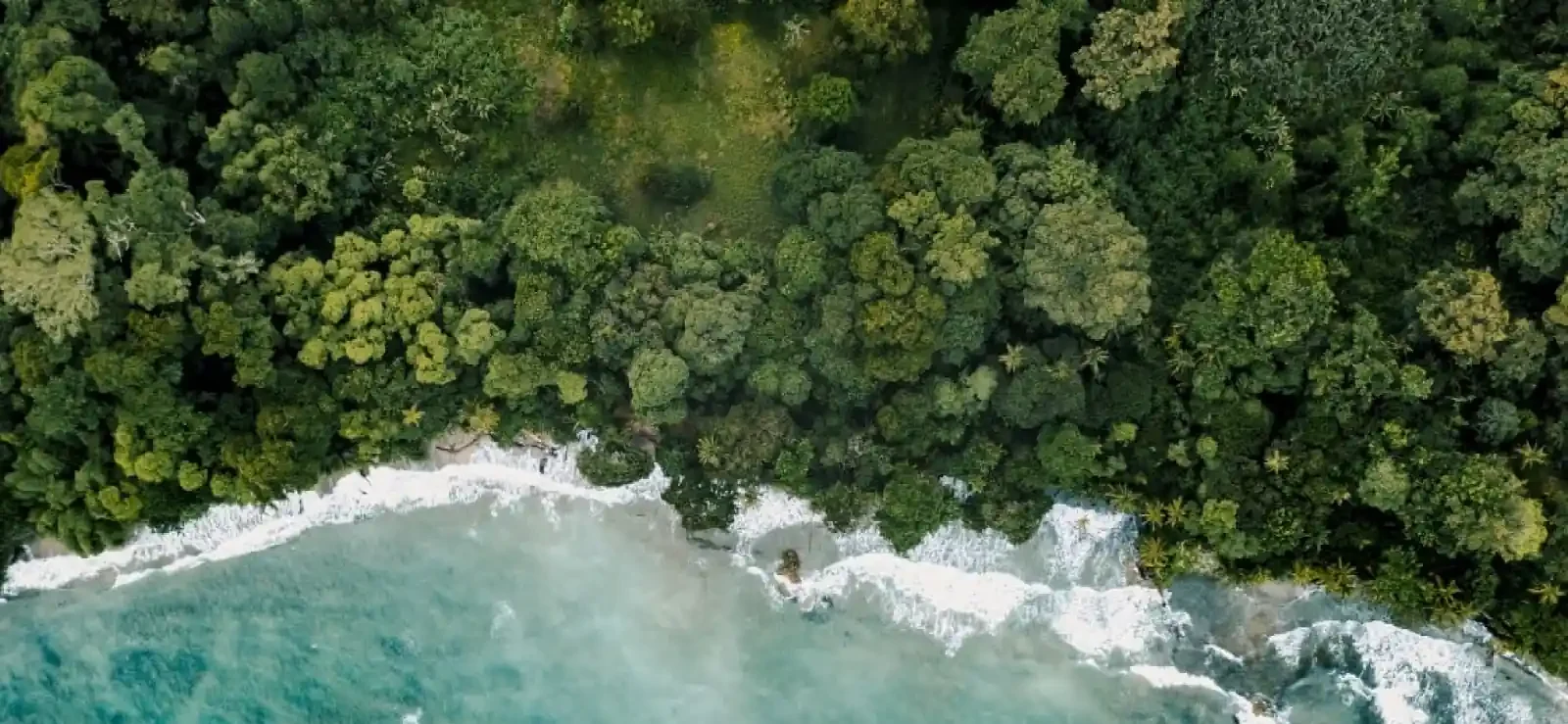The highlights of southern Spain
Trip highlights
- Enjoy a private exploration of the Alhambra
- Savour velvety wine at Bodegas Alvear
- Explore Granada's old town
- Marvel at Castillo de Almodóvar del Río
- Learn the wine-making history of Jerez
- Enjoy delicious caviar at an organic farm
Bespoke trips with Jacada
We design one-of-a-kind journeys incorporating luxury in all its forms. Our bespoke trips include:
- Luxury accommodation throughout
- Privately guided tours
- Private transfers
- Meticulously selected experiences
- Expertise and support from your Jacada Concierge

- Days 1–4 Seville
- Days 4–7 Cordoba
- Days 7–10 Granada
- Days 1–4 Seville
- Days 4–7 Cordoba
- Days 7–10 Granada
Itinerary in detail
Every Jacada trip is tailored to your personal preferences and interests. Below you’ll find a sample itinerary to inspire your own custom-designed journey.
Three nights of discovery in Seville
The jewel in the Moorish Caliphate of Cordoba and the capital of the most powerful Castilian Kingdom, Seville has been left with eye-popping architecture and majestic grace. Discover the nooks and crannies of the old town, feel the passion with a flamenco show and dine like a local with a tour of the city’s tapas bars, each with their own mouthwatering specialities.

Where you could stay
Seville
Overview
Steeped in history, the Hotel Alfonso XIII was constructed by order of the King as luxury lodging for the international VIPs attending the 1929 Ibero-American Exposition.
This grand structure quickly became an emblem of the city centre and has been continuously used as a hotel until the present day, although Franco’s regime necessitated a name change to the Andalusian Palace while under his rule. To this day, you’ll find that it is the city centre’s only true, luxury property.
Typically Andalusian in style, the hotel expresses the region’s mixed Moorish and Castilian founding influences with authentic and detailed features. Each of its 151 bedrooms including its 19 suites are unique in design, falling into three style categories: Andalusian, Moorish, and Castilian.
Alongside its exalted, majestic architecture, Hotel Alfonso XIII is also notable for its large pool, which sits amidst lush gardens. This makes it a rare urban sanctuary and one of the only locations where being in Seville during the heat of high summer will be thoroughly enjoyable.
By the pool you’ll find an al fresco restaurant that turns itself into a twinkling vision after dark and serves Spanish and international delicacies. You can also eat in the sumptuously-tiled gallery surrounding an arched interior courtyard where you can take your breakfast and coffee. If you fancy something truly epicurean, the atmospheric Ena tapas bar is manned by Michelin-starred chef Carles Abellán of Barcelona. Afterwards, discuss the highlights of your meal to the accompaniment of live piano music at Bar Americano.
In terms of location, you’ll find that you really couldn’t be better placed to discover Seville. Hotel Alfonso XIII sits right on the edge of the old – pedestrianised – quarter, meaning that you can benefit from arriving to the hotel by car and walking five minutes to outstanding historic sites such as the Cathedral de Seville, the Alcazar, Puente de S. Telmo, and Plaza de Espana.
→ Find out moreHighlights of Seville
Seville's oldest quarter
Dance
Delicious specialities
Delicious specialities

A walking tour
Enjoy a walking tour through Barrio de Santa Cruz, Seville’s oldest quarter. You’ll visit the cathedral which sits on the site of the Great Mosque of the 12th century; the only part of this that remains is the minaret, now known as the Giralda Tower. The Royal Alcazar was the site of the marriage between Carlos V and Isabel of Portugal and is centred around two courtyards. The Ambassador’s Hall is beautifully decorated with plasterwork and tiles, while the top floor is accessed by a 16th century staircase featuring paintings by Roelas and Madrazo. The pretty gardens reflect the passing of historical periods and are a lush hideaway filled with pomegranate, orange and palm trees.

Flamenco show at Museo del Baile Flamenco
Flamenco is the traditional song and dance of the gypsies of Andalusia and was developed over hundreds of years before becoming popular in the 19th century as a form of café entertainment. There are three parts to every flamenco show: ‘grande’ or ‘hondo’ with intense, profound songs; ‘intermedio’; and finally ‘pequeño’, lighthearted songs about love and nature. The cast changes every day here so there is always something new to experience. You’ll get to appreciate the differences between male and female flamenco dancers and enjoy the exceptional music that accompanies them.

Tapas tour
Spain has an incredibly rich culinary history and is famous for its tapas, bite-sized morsels of delicious food usually enjoyed with a glass or wine or beer. You’ll visit some of the city’s best tapas bars and enjoy dining the way Spaniards have for more than two centuries.
Sherry wine tasting in Jerez

Discover the unique wine spoils of enchanting Jerez on a tantalising tasting. Your host, a Jerez insider with an endless knowledge of the wonderful world of sherry, will lead you on a stroll through the charming town, stopping at a local winery for an immersive look into how sherry is made and its history. Next, it’s onto the countryside where your host will open the doors to a private, family-owned winery where you will get a true feel for the traditions behind sherry. Explore the vineyards and wine cellar, ending your tour with a traditional lunch among the vines as you share laughs and stories.
Three nights of luxury in Cordoba
Ancient, worldly, and sophisticated, Cordoba sits on the banks of the Guadalquivir river and is bursting with impressive architecture from the Mesquita mosque to the Alcazar with its beautiful gardens filled with fragrant lemon and orange trees.

The best of Cordoba
City highlights
Royal ruins
Wine tasting
Wine tasting

A guided tour
Cordoba is perhaps Spain’s most handsome city, a historic centre of culture and lasting testament to a golden age of religious tolerance during its time as a caliphate. Visit today and you’ll find Cordoba’s grand past beautifully reflected in the city’s magnificent architecture. During your tour, explore the Moorish, Jewish and Christian quarters including the Alcazar with its beautiful gardens. You’ll also discover Roman remains and the famous Mezquita Mosque-Cathedral.

Exploring Medina Azahara
In 936AD, Adb ar-Rahman III decided to move the seat of government away from Cordoba and set about building a new royal city 8km away. The city was to reflect the powerful kingdom he governed and was constructed using marble, gold and precious stones. Built on three terraces and surrounded by a city wall, the royal castle sat proudly on the middle level while the lower levels were reserved for living quarters and the mosque. The city was destroyed in the civil war between the Berbers and the Moors and was lost for over 1000 years. Luckily, it was rediscovered in 1911 and excavation still continues.

A visit to Bodegas Alvear
Alvear is one of the most prestigious and internationally renowned bodegas in Andalusia, boasting extensive vineyards that are located in the most famous estates in the Sierra de Montilla y Moriles. This privileged land’s star grape variety is Pedro Ximénez, which is thought to have originated in the Rhine region, and is used by the bodega as the unique base wine for its sweet, fino, oloroso and amontillado wines. You’ll tour the vineyards and winery and enjoy a tasting of its unique wines.
More to explore
Horses
Farms and castles

An equestrian show at Cordoba Royal Stables
Córdoba’s Royal Stables were founded in 1570 under King Felipe II, a life-long lover of horses. Today you will experience these magnificent beasts in their home city of Córdoba, in the stables dedicated to them, taking in the beauty and tradition of the installations and dressage show.

Visit Cortijo de la Reina and Castillo de Almodovar
Spend the morning swept up in the whispering breeze, sunsoaked earth and dancing olive groves of Cortijo La Reina, a 15th century family-owned farmstead just outside of Córdoba that is breaking moulds with its sustainable and biodiverse production of organic vegetables, legumes and olive oil.
Afterwards you can enjoy the countryside of Córdoba where Castle of Almodóvar del Río lies, a formidable fortress erected under Moorish power in the 8th century. The current Marquis of Motilla will welcome you into their castle to share the history that lies behind its walls.
Two nights in Moorish Granada
Granada sits at the foot of the Sierra Nevada mountains, the Iberian Peninsula’s highest massif. Renowned as the last stronghold of the Moors who were driven out of Western Europe in the 15th century, it’s here that you’ll best discover Andalusia’s splendid Arabic architectural heritage.

Where you could stay
Granada
Overview
Granada is a city with more than its fair share of beautiful buildings and stunning architecture. The luxurious AC Palacio de Santa Paula occupies the former Santa Paula Convent which has been lovingly restored to offer guests a relaxing retreat bursting with character.
The hotel is centred around a beautiful courtyard with elegant stone arches and palm trees, the delicate tinkling of the fountain in the background. It also houses the tombs of the nuns from the convent. Admire it from the wraparound balcony on the first floor, complete with 16th century frescos, or sink into one of the chairs and enjoy it illuminated at night.
Fusing old and new, the hotel has managed to retain its charm and authenticity while allowing guests to enjoy all the comforts of a modern hotel. There are 75 rooms and suites, some with exposed brick walls and views over the courtyard.
The restaurant occupies the former convent library and the menu makes for good reading, fusing traditional Andalusian flavours with more modern culinary concepts. The courtyard is the perfect setting for a glass of wine and nibbles.
You’re ideally situated on the Gran Via de Colon, one of the main avenues in Granada’s old quarter. The cathedral and archeological museum are on your doorstep and the majestic Alhambra is within walking distance.
→ Find out moreGranada
Overview
Granada is a city steeped in history, but this hasn’t stopped it embracing modern Spanish culture with aplomb. The blend of old and new is what makes a stay at the Hospes Palacio de los Patos so special.
The hotel is split across two buildings, one a renovated 19th century palace and the other a striking modern construction. The interior is bright and airy, and rooms in the older part of the hotel contain beautiful features such as plasterwork ceilings, Doric columns and friezes.
After a day of exploring, you’ll relish the opportunity to relax and unwind in the spa which features Turkish baths, a sauna and thermal pool. Sightseeing can build up quite the appetite so enjoy some traditional Spanish tapas or dishes inspired by the city’s Moorish past in the hotel’s restaurant.
No trip to Granada would be complete without visiting the majestic Alhambra, a series of palaces and gardens built under the Nazari Dynasty in the 14th century. Be sure to also stop by the Granada Cathedral and the Alcazaba, a wonderfully preserved Moorish fortress.
→ Find out moreGranada
Overview
The Alhambra is one of the most iconic landmarks not just in Granada, but across Europe. The Parador de Granada is located within its grounds and is the perfect place to appreciate it in all its glory.
A former Franciscan convent, the Parador was built on the site of a Nasrin palace. The remains of the Turkish bathes are still visible today and other relics are housed in the hotel museum. Part of the building was the former chapel where the kings of Spain were buried before moving to the Royal Chapel.
Enjoy a stroll in the garden, from which you can look out at the city’s medieval walls and towards the Sacramonte and Albaicín neighbourhoods. The hotel blends classic and contemporary design with wooden floors, latticed shutters and pieces of antique furniture alongside more modern features in the 45 rooms and suites. The restaurant serves traditional Spanish cuisine and the terrace is the perfect place to while away balmy summer evenings.
The Alhambra is understandably one of Spain’s most popular attractions, but your prime location means you can enjoy its majestic palaces and beautiful gardens once the crowds have disappeared.
→ Find out moreHighlights of Granada
The old town
An ancient palace
Tastings
Tastings

A privately guided tour
Wander around the narrow streets of the Albaicin medieval neighbourhood for fine examples of Moorish and Morisco construction. Declared a UNESCO World Heritage Site in 1984, the district faces the Alhambra and is home to several attractions including the remains of an Arab bath complex, Granada’s archeological museum and the church of San Salvador.
You’ll also visit the Sacramento neighbourhood, famous for its gypsy caves.

Tour of the Alhambra and Generalife Gardens
The lavish Alhambra is Granada’s most visited site. Once a palace and fortress for the city’s Muslim rulers, the Alhambra means ‘red fort’ and is named after the red clay used in its construction in the mid-13th century. The Generalife was the country residence of the Nasrid king and the recreational courtyard and its beautiful gardens sit on the slopes of the Cerro del Sol, offering spectacular views.

Visit an organic Sturgeon Farm
This sturgeon farm, just west of Granada, has been in operation since 1956 and is one of the leading sturgeon farms in the world. In fact, it is the only farm with organic certification for caviar and sturgeon. Be welcomed by your local hosts with a drink while you learn about the sustainable project’s history and mission.
Afterwards, enjoy a guided tour of the whole farm, and learn all about the life-cycle and treatment of the fish, finishing with a tasting of one of the best caviars in the world paired with Taittinger Brut Reserva champagne and premium vodka.
Why book with Jacada

Personalised design
We’ll plan your trip around your personal interests, tastes and preferences, providing honest advice based on first-hand knowledge.

Authentic experiences
Our expert guides and brilliant Concierges are hand-picked for their ability to bring your destination to life with care and passion.

Positive impact
We seek out unforgettable experiences that benefit both local communities and the environment.


